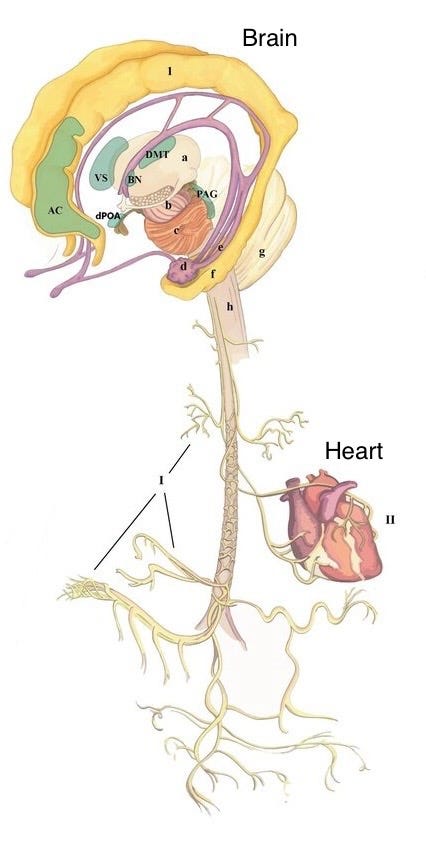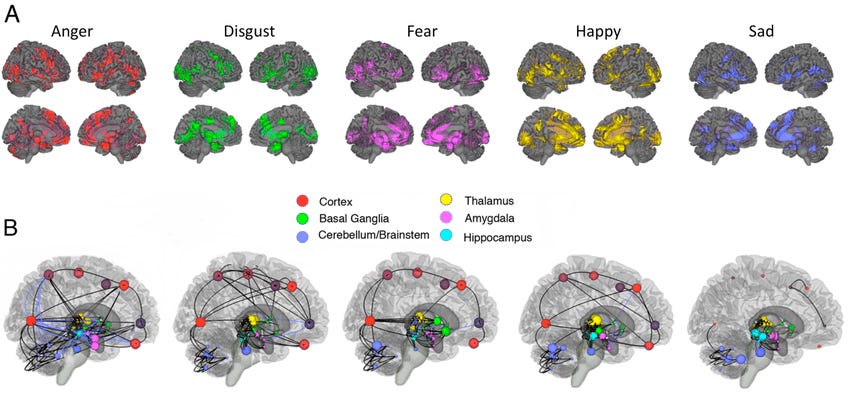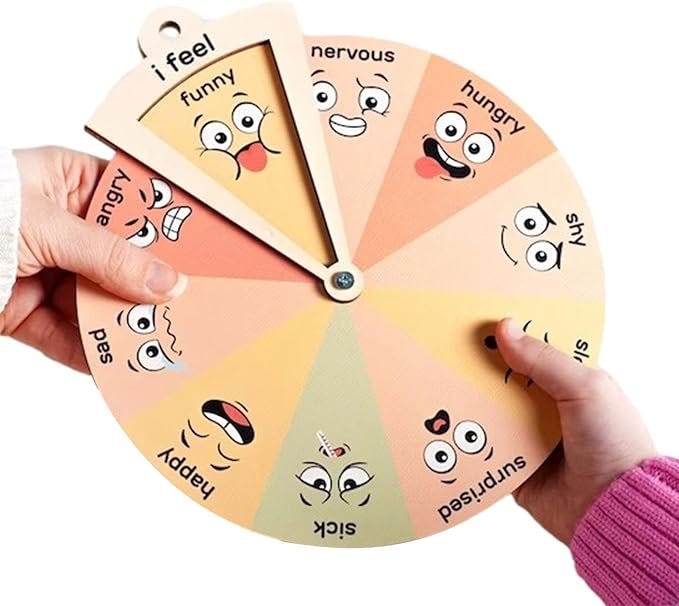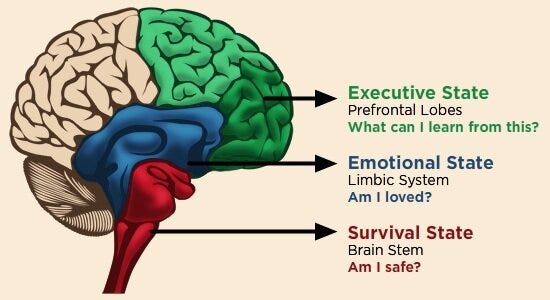Hi, ☺️✨ thank you for following and reading my content. I can’t tell how grateful I am when you read, like and share my posts; because behind each number is a real human with a real life and they dedicated some time of their day to read my writing; that’s so valuable. Thank you.
For this post, please expect a mixture of personal stories and values, some medic stuff on emotional regulation, quotes, and practices.
Neuroscience of emotional regulation
7 practices for emotional regulation
If you will, let me know your thoughts on this topic.
We suffer more often in imagination than in reality.
Seneca
I tolerate everything well, it’s something medical school taught me: Be tough.
But when it comes to something that I deeply care about, it’s hard to be cool.
My friends say that I’m too sensitive, they’re right.
When someone is sad, mad, or feels anything, I can feel it too. I can follow their thought patterns when they have a PTSD attack or flashbacks that suffocate them. I know because I’ve been there, I’ve felt that.
I know how it’s like to feel stuck in somewhere that hurts you.
When you have people around, a life to be grateful for, but there’s something hurting you and you don’t know what it is. You want to get it out, take it off your shoulders, run to a place where you can’t feel it.
But it’s stuck with you.
You can’t tell family or friends because that would make you an ungrateful person: “ you know how many people wish to be in your place?”
I know everyone is in pain, that’s the way of this world. But this fact doesn’t make my pain any less.
I am grateful, gratitude is something felt by heart and I feel that deep.
I have empathy and compassion for others.
But I also want some freedom, to be me.
I don’t want society tell me how to act like a dignified girl, I don’t want anyone to tell me what job is the best for a woman.
I know what I want, not crystal clear, but I know.
Please keep your suggestions to yourself. If you were afraid to be whatever you want because of policies of our country or judgment of other people, please stop teaching me to be like you; 23 years was enough.
I have a long way to build an authentic life, to heal and clear all of the limits you have set me, to not stop myself of being who I am.
I might live short or long, but as long as I’m alive I want to dedicate it to what I deeply care about:
Healing: from past traumas, from recurring traumas we face everyday, from the pains we’re inherited.
Compassion: to ourselves, to other people, to other creatures on earth, to nature.
Authenticity: find out who you are, and build what you care about, share it and grow with others.
Do I have a straight path to it? NO.
Am I willing to dedicate my life to it? YES.
When I talk about these to others, or help them get over a heartbreak, or clear their mind and find what they truly want, what I always hear is:
“ You will be a great psychiatrist!”
Is this really the only way? Maybe if we change the way we approach to diseases or imbalances.
Human is more than some organs working together. New healthcare needs a holistic and personalized approach. This person you call a “patient” and treat them on paper, is a real human who lived a life. what happened to them matters, because that’s what has made them sick. what goes on in their life matters, because that indicates their future.
Therapy? No, thank you. I don’t want to be shrank to a differential diagnosis that DSM-5 tells how to fix me.
A high mountain with plains, sunshine pouring between the leaves, moon with a breeze over my face, stars, diving deep between the lines of a good book, feeling the soil and stones with my feet, swallowing the smell of dark coffee with classic-old Iranian music, watching the beautiful smile on my mother’s face, hearing my sibling’s and father’s laughter, a deep conversation with a good friend, listening to Quran, writing in silence;
that’s what I call therapy.
This world is too loud, too fast, too bright for me.
I process everything deeply, so it takes a while.
My friends say I’m too sensitive, they’re right; though, I can be impossible sometimes.
I mean, it’s not their fault that my brain’s wire in a highly sensitive way. This is who I am, not an excuse to lock myself in a dark room and run away from people.
So, each time something messes up with my emotions, my logical brain helps me out. Just, sometimes it forgets to, and I end up crying! I take some time to rest, pull myself back together and return stronger.
I know when I need it: some sh*t happens, everything seems louder, brighter, spinning. I feel like I’m drowning. There, that drowning tells me it’s too much and I need some space to process it.
And when I don’t feel that drowning, my prefrontal cortex takes over the sail.
That’s what we call Emotional Regulation.
But, what really happens in our brains??
Neuroscience of emotional regulation
Okay, now we get to the medic stuff!
Emotional regulation is the process by which our brains manage and control the intensity, duration, and expression of emotions. It's a vital mechanism that helps us respond adaptively to the world around us, maintain social connections, and navigate challenges.
Let’s dive into what happens in the brain when emotions arise, how regulation occurs, what disrupts this ability, and the interplay between brain and body in the process.

What Happens in the Brain During an Emotional Reaction?
When something significant happens—be it a kind word, a sudden threat, or a personal setback—our brain processes the event through two major pathways:
1. The Fast, Automatic Pathway (Low Road):
This involves the amygdala quickly detects potential threats or emotionally salient stimuli. It immediately activates a "fight or flight" response, triggering emotions like fear or anxiety.
2. The Slow, Deliberate Pathway (High Road):
This pathway engages the prefrontal cortex (PFC), particularly the ventromedial and dorsolateral regions. The PFC evaluates the situation more carefully, integrating context and past experiences to decide whether the initial emotional reaction is appropriate.
In this dynamic, the limbic system, with the amygdala as its centerpiece, drives emotional responses, while the prefrontal cortex works to modulate and contextualize those emotions.

How Does the Brain Regulate Emotions?
Emotion regulation involves several brain areas working together:
Prefrontal Cortex (PFC):
The PFC plays a central role in higher-order cognitive functions, like decision-making and impulse control. It helps downregulate the activity of the amygdala, preventing emotions from spiraling out of control. Techniques like reframing negative thoughts ( remember the reappraisal we talked about in the last post?) or focusing on long-term goals often activate the PFC.
Anterior Cingulate Cortex (ACC):
The ACC monitors conflicts between our emotional impulses and social norms, helping us select appropriate behavioral responses.
Insula:
The insula bridges the brain and body, integrating physical sensations (like a racing heart) with emotional experiences, enabling us to understand how we feel.
When emotional regulation works effectively, the PFC and ACC exert top-down control over the amygdala, balancing emotional intensity with rational thought.
What Can Disrupt Emotional Regulation?
Several factors can impair the brain’s ability to regulate emotions:
Chronic Stress:
Prolonged stress floods the brain with cortisol, weakening the PFC and making it harder to suppress the amygdala's reactive impulses.
Trauma:
Traumatic experiences can hyper-sensitize the amygdala while impairing the PFC's regulatory capabilities, leading to heightened emotional responses or difficulty calming down.
Mental Health Disorders:
Conditions like anxiety and depression, often involve dysregulation of the limbic-PFC network, making emotions feel overwhelming or uncontrollable.
Neurological Damage or Aging:
Injury to the PFC or natural age-related declines in its functioning can reduce one’s capacity for emotional regulation.
The Brain-Body Connection in Emotional Regulation
While the brain is the command center, emotional regulation also depends on physiological processes across the body:
Autonomic Nervous System (ANS):
The ANS, especially the parasympathetic branch, helps regulate physical responses to emotions, like lowering heart rate after a stressor. Techniques like deep breathing can stimulate the vagus nerve to calm the body and, by extension, the mind.
Hormonal Systems:
Hormones like cortisol and adrenaline amplify emotional reactions, while oxytocin and serotonin promote calm and social bonding. Hormonal imbalances can interfere with emotional stability.
Gut-Brain Axis:
The gut microbiome communicates with the brain via the vagus nerve, influencing mood and emotional health. Diets rich in fermented foods and fiber have been shown to improve emotional regulation by fostering a healthy microbiome.
Musculoskeletal System:
Muscle tension often reflects and exacerbates emotional states. Practices like progressive muscle relaxation can release physical tension, aiding emotional balance.
Conclusion
Emotional regulation is a complex interplay between brain regions like the PFC, amygdala, and ACC, alongside the autonomic nervous system, hormones, and even the gut. When these systems function harmoniously, we can adaptively manage emotions, but factors like stress, trauma, or neurochemical imbalances can disrupt this balance.
Understanding the neuroscience of emotional regulation not only deepens our self-awareness but also underscores the importance of holistic approaches—like mindfulness, physical health, and cognitive training—to enhance emotional resilience in everyday life.
7 Practices to implement the concept

These practices aren’t just tasks; they’re ways of thinking and being that integrate into daily life. By experimenting with these strategies, you’ll gradually build a more regulated and resilient emotional landscape—one that empowers you to navigate life’s challenges with grace and authenticity. Which of these would you like to dive deeper into?
Name Your Inner Narrator
Why it works: Labeling your emotions or internal critic creates psychological distance. This practice borrows from both Stoicism and psychological tools like cognitive defusion.
How to do it: Give your reactive self a name or persona—like "Dramatic Dave" or "Panicked Paula." When you notice a surge of emotion, say, *"Oh, that’s just Dramatic Dave freaking out again. Let’s see what’s really happening."* This shifts you into a more observational mindset, making it easier to regulate emotions.
P.s. this strategy doesn’t work sometimes, specially when you have a PTSD flashback. It’s good for day to day life stressors though.
Emotional “Micro-Journaling”
Why it works: Writing helps untangle emotional overwhelm and organize your thoughts, giving you clarity and control.
How to do it: Dedicate some time to jotting down:
1. The emotion you felt strongly today.
2. What triggered it.
3. How you could view it differently.
Example: *“Felt angry when criticized at work. Trigger: Fear of being seen as incompetent. Reframe: Feedback helps me improve—it’s not personal.”* Over time, this trains your brain to reflect rather than react.
P.s. this strategy failed me the first time I used it: when my oncologist professor criticized me. I cried the entire way home!
Create a Physical Anchor
Why it works: Physical sensations ground you when emotions feel overwhelming, leveraging the brain-body connection.
How to do it: Choose a soothing tactile item—a stone, a piece of fabric, or even a piece of jewelry. When you feel a wave of intense emotion, hold the item and focus on its texture, temperature, and weight. Pair this with a mantra like, *“This will pass.”* It redirects your mind to the present and signals safety to your nervous system.
P.s. you can do it even without a tactile item. I press my hand nails with my fingers when I’m overwhelmed. It works most of the time.
End-of-Day “Reset Ritual”
Why it works: Small, intentional rituals signal closure to your brain, preventing emotional residue from one day from spilling into the next.
How to do it: Create a simple routine to “close” your day, like lighting a candle, taking three deep breaths, and mentally releasing frustrations. Whisper to yourself: “Today is done. Tomorrow is new.” Over time, this reduces chronic emotional buildup.
P.s. this one is my favorite! It has been a life changer for me. I learned this after reading Deep Work by Cal Newport.
Shift the Environment, Not Just Your Mind
Why it works: Emotions are influenced by physical surroundings, and small tweaks can redirect your brain’s focus.
How to do it: When emotions feel unmanageable, physically change your space. Go outside, open a window, rearrange objects, or adjust lighting.
P.s. I usually use this, I walk out and take my time to process things. But when I can’t, I use the next strategy.
Use Music to Reframe Mood
Why it works: Music directly influences the limbic system, which regulates emotions.
How to do it: Create a playlists for specific emotional needs—a calming playlist for anxiety, an uplifting one for sadness, or a reflective one for frustration. When overwhelmed, put on the playlist that matches your desired mood. Let the rhythm and melody guide your brain to that state.
P.s. my second favorite strategy! I love this, it usually works; and when it doesn’t I listen to Quran, it heals my heart and soul.
Check Your Gut—Literally
Why it works: Gut health profoundly influences mood and emotional stability through the gut-brain axis.
How to do it: Pay attention to what you eat, as certain foods can amplify emotional reactivity (e.g., sugar, processed foods). Experiment with incorporating probiotics, fermented foods, and omega-3s, noticing how they affect your emotional resilience. Pair this with a mindful eating habit: “How does this food make me feel 30 minutes later?”
P.s. this one really works. When I quit sugar 8 months ago I had no idea how much it’d impact my life quality. I feel my best when I eat fruits and vegetables, and my worst when I eat spaghetti or meat. ( I guess we don’t count ice-cream as a sugar, right? :)
What are your favorite strategies? Tell us in the comments below 👇






